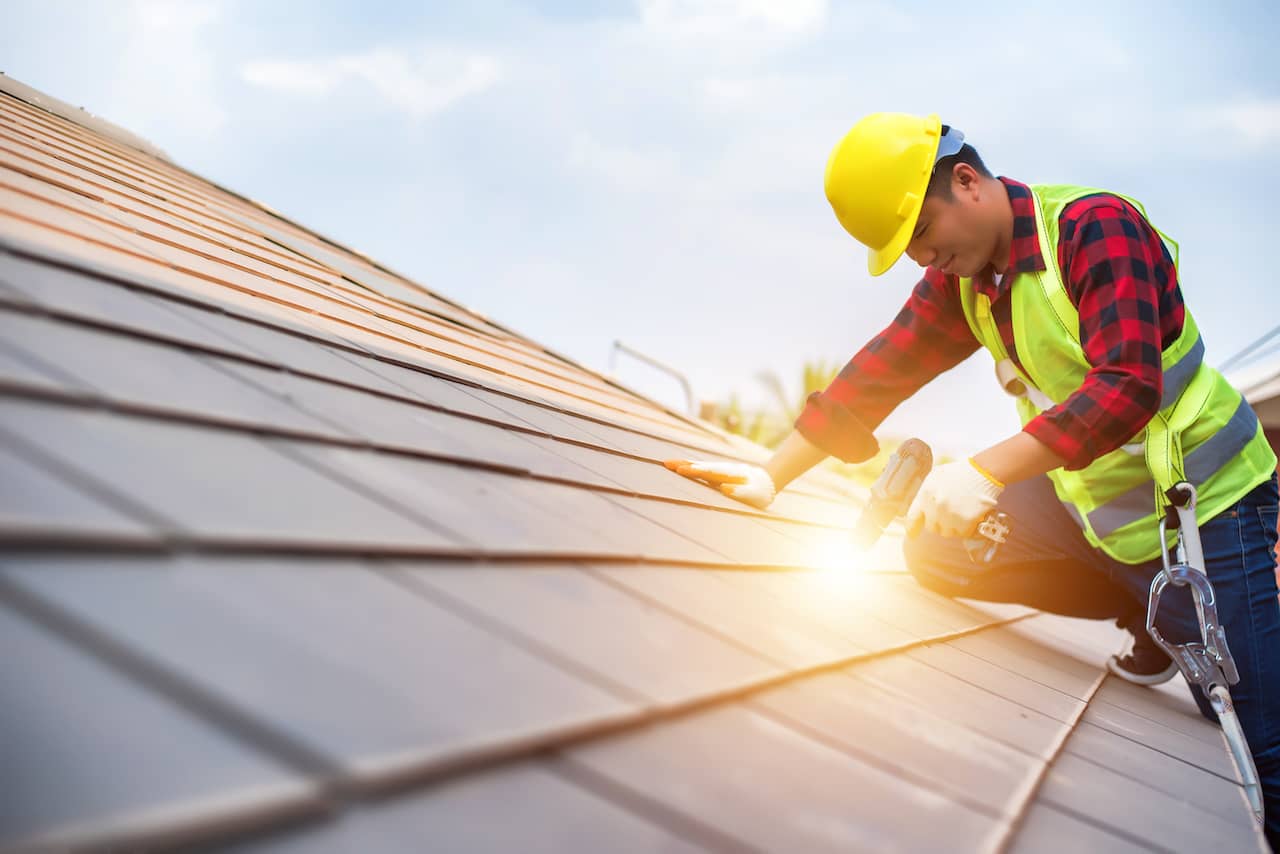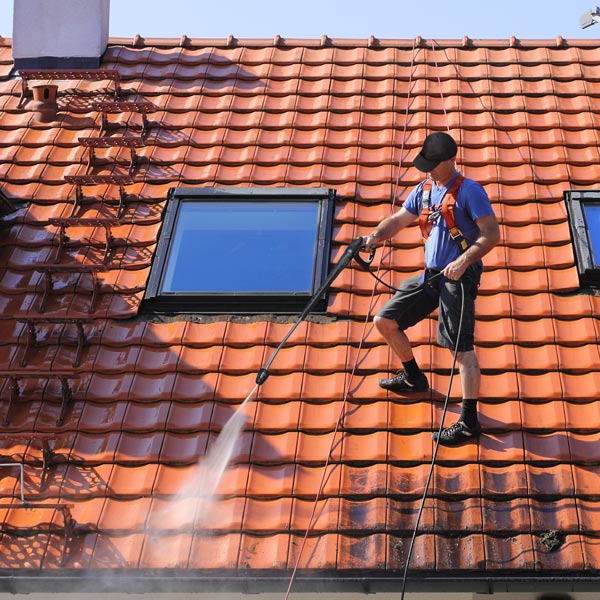The Ultimate List for Roof Covering Install: Ensuring Quality and Toughness
The process of mounting a roofing system calls for cautious focus to information. A comprehensive list can help assure top quality and durability throughout the project. From reviewing the existing roof covering condition to choosing the best products, each step is vital. Proper preparation and tools play an essential function in accomplishing an effective installment. Nonetheless, many ignore the importance of last inspections and ongoing upkeep. Comprehending these aspects can considerably affect the longevity of a brand-new roofing.
Examining Your Existing Roof Covering Condition
Just how can one efficiently identify the problem of their existing roofing system? A thorough assessment is important for examining a roof's stability. House owners must start by checking out the roof covering from the ground, searching for visible indications of wear such as missing out on tiles, sagging areas, or discoloration. Closer evaluation can be done by accessing the roof covering itself, where one ought to look for cracked or crinkled tiles and check blinking around vents and chimneys.Additionally, the interior of the home warrants focus; water stains or mold and mildew growth on ceilings and walls might show leaks. Attic evaluations can disclose possible problems, such as poor air flow or indicators of moisture.Regular evaluations, preferably twice a year, can assist recognize problems early and prevent pricey repair work. By recognizing the roof covering's current state, homeowners can make informed choices about needed upkeep or replacements.
Selecting the Right Roof Materials
When picking roofing products, what factors should property owners take into consideration to assure a durable and efficient selection? Initially, the climate plays a substantial duty; materials should endure local climate condition, whether it's heavy rainfall, snow, or extreme sun. Next, the longevity of the product is vital; alternatives like metal or slate deal expanded lifespans compared to asphalt tiles. Home owners must likewise evaluate the product's weight, as this can affect the architectural integrity of the home. Furthermore, appearances issue; the selected material needs to enhance the total architectural style. Energy efficiency is one more factor to consider; some products show warm, minimizing cooling costs. Budget constraints will determine selections; while some materials may have a lower in advance price, long-term durability can lead to greater cost savings. By considering these elements, property owners can make informed choices that enhance their roofing system's high quality and longevity.
Preparing for Installment
Prior to the setup process begins, home owners should assure that their residential or commercial property is effectively prepared to accommodate the brand-new roofing. This preparation involves numerous vital actions to guarantee a smooth and efficient installation. Property owners must remove the area around the home of any debris, tools, or furniture that might impede gain access to for service providers. Furthermore, it is necessary to notify next-door neighbors about the forthcoming work to reduce interruption and safe cooperation.Next, home owners need to evaluate their existing roof and architectural parts, attending to any kind of prospective concerns such as rotting wood or leaks that could affect the setup. Additionally, protecting essential licenses and sticking to neighborhood building regulations is important for compliance and safety. Arranging the setup during favorable weather problems helps stop hold-ups and warranties that the work proceeds without problems. Appropriate preparation sets the structure for a successful roof task, ultimately boosting the durability and efficiency of the new roofing system.

Important Devices and Equipment
In roof setup, having the right devices and equipment is essential for a successful project. This includes crucial safety and security gear, different roofing installment devices, and effective product dealing with tools. Proper preparation and selection of these things can greatly boost efficiency and security on the work site.
Security Gear Necessities
Security equipment is an important component of any type of roofing installment job, making certain the well-being of workers at elevated heights. Essential safety equipment consists of difficult hats, which shield against dropping debris, and security goggles to shield the eyes from dirt and bits. Non-slip shoes is significant for maintaining grip on steep surfaces, while harnesses and lanyards offer loss defense, preventing serious injuries. Handwear covers aid secure hands from sharp products and reduce tiredness during extended periods of job. Furthermore, high-visibility vests enhance presence, promoting recognition amongst staff member and nearby workers. Using ear security may additionally be suggested in loud atmospheres. Overall, adhering to security equipment demands is critical for a risk-free and efficient roofing setup procedure.

Roofing Installation Tools
Proper precaution lay the groundwork for an effective roofing job, however having the right devices and equipment is equally important. Crucial devices for roofing setup include a ladder, permitting secure accessibility to the roofing system, and a roof covering nail weapon to assure efficient and safe attachment of products. A chalk line is essential for marking straight lines, while an utility knife is needed for reducing roof materials precisely. In addition, a lever help in getting rid of old tiles. Employees must additionally have a level to confirm appropriate alignment and drain. A good pair of job handwear covers shields hands while giving grip. With each other, these tools help with a smooth roofing procedure, improving both high quality and toughness.
Material Handling Equipment

A range of product handling devices is vital for an effective roofing setup procedure. Tools such as forklifts, raises, and dollies facilitate the motion of hefty materials like tiles and underlayment to the task website and onto the roof. Using scaffolding and ladders warranties secure accessibility to raised areas while minimizing the threat of injury. Tarpaulins and containers are required for proper storage space and organization of products, stopping damage and guaranteeing very easy access. Additionally, a crane may be required for bigger roofing jobs to raise significant products straight onto the roofing. Correct training being used this equipment is crucial; it improves process efficiency and adds to total task safety, ensuring a successful roof installation.
Step-by-Step Setup Process
The step-by-step setup process is crucial for an effective roof installment. It begins with preparing the roofing surface area, followed by the correct installation of underlayment, and concludes with the effective securing of roofing materials. Each of these actions plays a crucial duty in ensuring the longevity and functionality of the roofing system.
Prepare the Roofing System Surface
Preparing the roof surface is essential for ensuring an effective installment of roof covering products. This process begins with an extensive evaluation to identify any existing damages or particles. Any kind of loose shingles, protruding nails, or old roof covering materials should be eliminated to produce a clean, smooth structure. Next, the roof deck need to be looked for rot or architectural issues, as these can compromise the stability of the new roof. After fixings, an extensive cleaning is necessary; this consists of sweeping away dust, leaves, and any type of various other pollutants that could prevent bond. Lastly, ensuring correct drainage and air flow is important, as these factors affect the longevity of the roofing. A well-prepared surface sets the stage for excellent installation and sturdiness.
Install Underlayment Properly
Installing underlayment properly is basic for improving the general performance of the roof. The process starts with picking the appropriate underlayment material, which can include felt, artificial, or rubberized choices. Next off, verify the roofing system surface is clean and completely dry prior to laying the underlayment - roofing company honolulu. Begin at the most affordable point of the roof covering, turning out the underlayment horizontally and overlapping each row by a minimum of 6 inches. It is necessary to secure the underlayment in position with staples or roof nails, staying clear of spaces or creases that can compromise water resistance. Finally, trim excess material at the edges, guaranteeing a neat surface. This meticulous installation step is important for providing an added layer of protection versus moisture and enhancing durability
Protect Roofing Materials Effectively
After verifying the underlayment is appropriately installed, the next action involves protecting the roof covering products efficiently. Initially, the roofer should collect all essential products, consisting of tiles, nails, and blinking. Beginning at the most affordable factor of the roof, tiles must be laid in a staggered pattern, confirming correct overlap to stop leaks. Each shingle has to be secured with nails, using the supplier's suggested spacing and quantity. It is vital to drive nails right, avoiding over-penetration, which can endanger the material. Blinking ought to be installed around smokeshafts and vents to enhance waterproofing. The specialist must conduct a detailed evaluation to verify all materials are safely secured, as this will significantly affect the roofing's total durability and durability.
Conducting Final Examinations
Complete get more info last examinations are necessary to ensure that a recently set up roofing fulfills all safety and security and high quality criteria. This important action involves examining the whole roof for any potential issues that may occur post-installation. Examiners must check out the placement of tiles, making certain they are correctly protected and devoid of flaws. Flashing and air flow systems need to additionally be reviewed for correct installment and functionality.Additionally, the assessor needs to examine seamless gutters and downspouts to verify they are properly positioned to help with water drainage. Any type of indications of leaks, misaligned materials, or inadequate securing around infiltrations must be dealt with instantly. Roofing contractors should likewise make sure that all particles from the installation procedure is gotten rid of, leaving the website tidy and risk-free. Conducting these comprehensive inspections aids stop future issues, eventually extending the life expectancy of the roofing system and supplying property owners with peace of mind regarding their investment.
Keeping Your New Roof Covering
Proper maintenance is important for ensuring the longevity and efficiency of a brand-new roofing system. House owners should carry out normal assessments at the very least twice a year, ideally in springtime and fall, to identify prospective concerns early. During these evaluations, they must look for signs of damages, such as missing out on tiles, leaks, or debris accumulation, which can hamper water drainage and advertise mold growth.Cleaning rain gutters and downspouts is necessary, as clogged up systems can lead to water damage and structural problems. Furthermore, cutting looming branches can protect against abrasion and debris buildup on the roof surface.It's additionally suggested to arrange expert assessments every couple of years to assess the roofing's condition thoroughly. Maintaining records of upkeep tasks and repair services can assist track the roof's performance in time (honolulu roofing contractor). By sticking to a constant maintenance regimen, home owners can protect their financial investment and ensure their new roofing system remains reliable for many years to find
Often Asked Concerns
For how long Does a Common Roof Installment Take?
The period of a normal roofing system installation differs based upon variables such as roofing size, materials, and climate condition. Generally, it can take anywhere from eventually to a number of weeks to complete the setup.
Can I Install a New Roof Covering Over an Existing One?
The concern of installing a brand-new roofing system over an existing one commonly occurs. Many house owners consider this choice for cost-effectiveness, but it is necessary to review regional building regulations and the architectural stability of the existing roof covering.
What Permits Are Required for Roof Covering Installation?
Before mounting a roof covering, one must examine regional policies. Commonly, building permits are required, along with inspections to assure conformity with safety requirements and zoning legislations. Consulting with regional authorities is important for appropriate guidance.
What Service warranties Are Readily Available for Roof Products?
Numerous service warranties exist for roof materials, usually consisting of manufacturer service warranties covering flaws and efficiency. In addition, some professionals provide handiwork service warranties, making certain setup quality. Buyers must thoroughly review terms to understand protection duration and limitations.
Exactly How Can Climate Influence the Setup Refine?
Climate considerably influences the installation procedure, as rainfall, snow, or severe temperatures can delay job, affect product attachment, and concession safety. Appropriate preparation and organizing around weather prediction are crucial for successful roof setup.